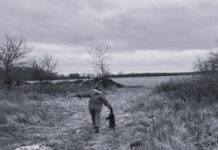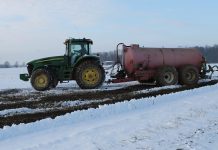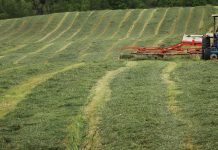Are you thinking of purchasing some land to graze livestock on? Or maybe you already have some property that you would like to convert to pasture. How do you get started? Here are some questions to ponder.
The first thing to think about is why do you want to get into grazing in the first place. It is an important question to consider. Is this something to do as a hobby or something you want to make some money from? Make sure others in your household are on board and that you will have the time to dedicate towards a grazing venture. Think about what may need to be given up to have a successful grazing operation.
Resources
What resources are available for you to get started? Land, of course, is a big one, but not all land is suitable for grazing. What type of forages do you currently have? Would you consider it productive (i.e. are there a lot of weeds and is there dense growth)? What livestock are you wanting to graze in the pasture? Get familiar with the nutritional requirements for the species you want to raise. Determine how many acres you have that livestock (and you) will be able to access and omit areas with hazards such as steep slopes.
Water
Consider access to water. What are the characteristics of ponds, streams and springs on the property? Can access be developed if a water source is not already present, or will water need to be brought in from elsewhere? Work with your county’s U.S. Department of Agriculture Natural Resources Conservation Service and Soil and Water Conservation District to determine what water sources will work for your situation.
Infrastructure
Evaluate fences, buildings and equipment around the property. What condition are they in? What were they meant for? What maintenance is needed to match the needs of the livestock you want to raise? For example, fence needed for cattle might not necessarily work for goats without some modifications. What types of buildings are present, and what was the original purpose? Are buildings in good condition, or will they need some work? Equipment can be costly. Evaluate what you already have that actually works. Consider what will need to be replaced in the near future.
Management
Understand that pastures require management to maximize profits. Using management-intensive grazing can provide better quality forages and more total forages per acre as well as reduce the amount of supplemental feed needed. Learn more about pasture management at extension.purdue.edu/extmedia/AY/AY-328.pdf.
Costs
Getting started from scratch can be expensive — consider costs and financial resources available. Costs can include purchasing land and equipment or making improvements to soils, fences and buildings. They may be fixed or variable.
If you are a first-time farmer or producer, you may qualify for beginning farmers and ranchers loans from the USDA Farm Service Agency. Get to know the FSA staff in your area — they can help set up a farm number if you do not already have one. A farm number allows you to participate in USDA loan, disaster assistance and crop insurance programs.
Enterprise budgets can help plan for the cost of running a livestock operation. Visit https://farmoffice.osu.edu/farm-management/enterprise-budgets to view enterprise budgets provided by Ohio State University Extension.
Getting started
So, now that you know what you have, develop a vision, mission statement and some goals. Think about where you will see yourself in 10 years and what is most important to you. Vision refers to what we want something to become. The mission helps establish direction of the operation and defines the purpose of the business. Think about what you want the business to do and what you would like your business to be. Set some goals. Make goals SMART, which means they need to be specific, measurable, attainable, rewarding and timed. This will allow you to set benchmarks for measuring success.
If you plan to direct market to consumers, you may want to put some thought into your farm name. Choosing the right name is important, and a name should be memorable. Register farm names on the Ohio Secretary of State’s website at ohiosos.gov.
There are a variety of resources available to assist you with your grazing operation. Make sure to reach out to your local Extension office with questions about getting started.













